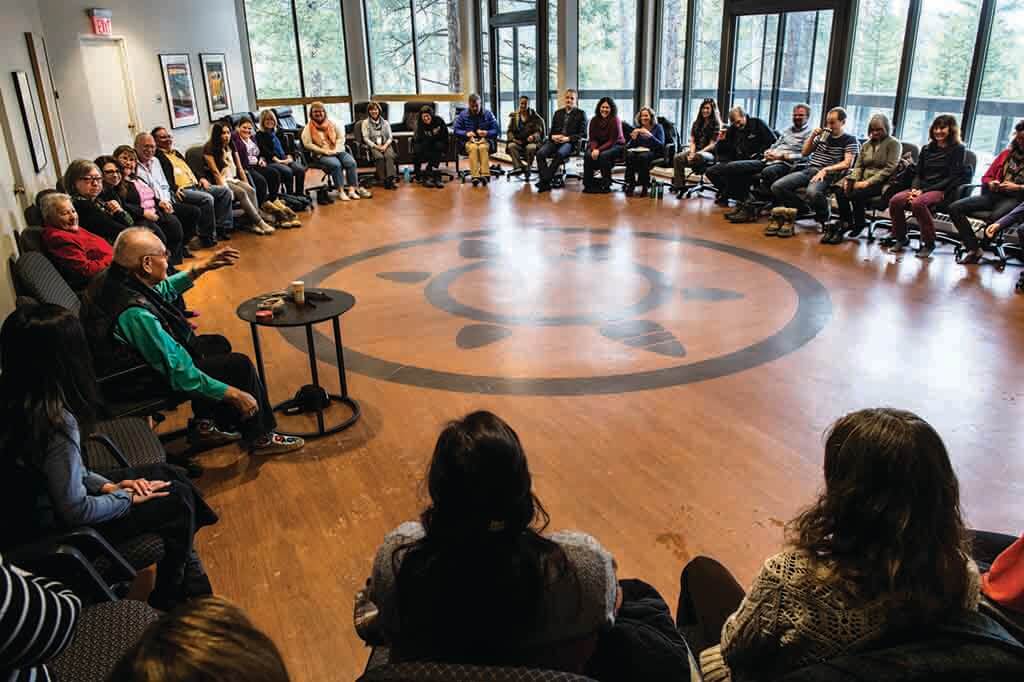
In part one of our report on Banff Centre’s artistic turnaround, we shared our impressions of their contemporised Summer Classical Music Program from ground zero. This is the final instalment to our BANFF summer series.
Openness to new ways of self-expression. Cross-disciplinary collaboration. Self-integration into a sustainable model of humanity.
Art is a medium for self-expression, which by extension should be an open platform for all. These appeals are being increasingly voiced by an emerging generation of artists, cultural groups, and arts thinkers, and have guided Banff Centre for Arts and Creativity as their realignment of their leadership mandate with a collective call to action.
“Leadership should be focused on extending the ladder of opportunity for everyone,” in the words of our current Prime Minister. “People can respond to a positive, inclusive vision of society. The result is creativity that enriches Canada and the world.”
Trudeau might as well have emitted those words at Banff Centre. As the institute works to grow their legacy as a leading hub for creativity, the Centre is concurrently expanding their profile in Indigenous leadership. To this end, Banff Centre has appointed Reneltta Arluk as their inaugural Director of Indigenous Arts. Beginning in November and running year-round, this heralds a brand of Indigenous arts leadership “focusing on decolonization and using art as a tool for reconciliation.” Arluk’s extensive background in Indigenous theatre will certainly inform her decisions, and her Inuvialuit, Dene, and Cree heritage makes her an ideal voice for Canada’s Indigenous population.
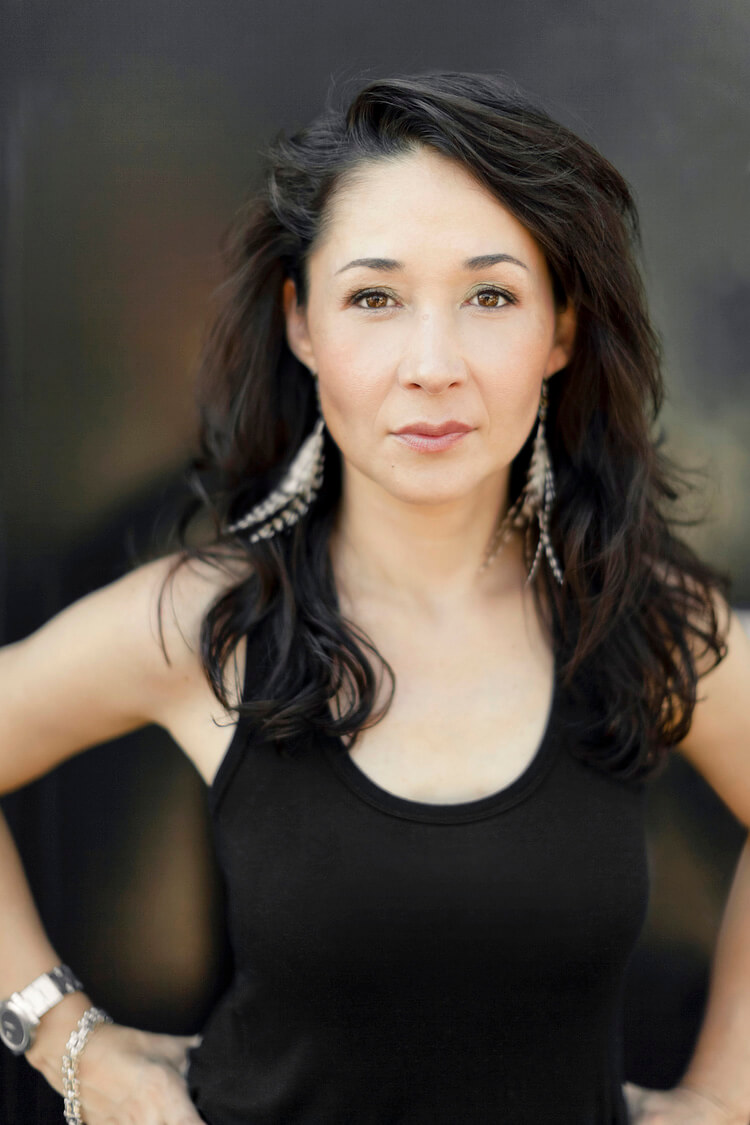
Coming from an impoverished community in the Northwest Territories, it wasn’t until Arluk turned 19 that she discovered the arts for herself. “That’s really what’s driven me to offer opportunities to youth that I wasn’t given. I think we should make it a little easier to access the arts.”
If arts had already been known as a volatile field in which to put down roots, it is even more difficult for Indigenous artists to avoid languishing under non-Indigenous artistic standards. But Canada’s 150th holds unique promise: “The discussions are happening in non-Indigenous spaces, because they’re curious about those conversations as well. […] I think what’s exciting about some of the 150 engagements is that organisations are recognising it as ‘what can we continue to do?’ instead of ‘what can we do once?’”
Arluk is encouraged by the increasing awareness of the Indigenous presence across professional spheres: as an example, she indicates that Ottawa’s National Arts Centre has appointed Kevin Loring to be their first artistic director of the Indigenous theatre department. Elsewhere in Ontario, “[there are] land acknowledgements starting at Stratford [Festival],” referring to the pre-performance statement in recognition of the traditional Indigenous land on which the performance will be held. It is a practice that British Columbia has also incorporated into their legislature, and an element that featured prominently before each Banff Centre presentation this summer.
Between Indigenous and Western art forms, it will be a delicate balance for Arluk to strike in programming decisions at Banff. “I’m not sure if it’ll always be harmonious, but I see new structures and models to engage in these arts. […] Indigenous arts have always been a part of our history—we live our art through our culture, we live our culture through our art.”
Do Indigenous Peoples wish merely to integrate as seamlessly as possible into the pan-Canadian scene, or do they wish for elements of their culture to be prominently featured? Arluk’s answer dispels any competitive edge: “Both are equally valuable.”
For Indigenous artists to reach this threshold, the question then becomes, “How to disseminate and elevate? We do need to start outreach into communities, then in arts galleries. […] We do need to be next to art that is not Indigenous, and we need Indigenous acknowledgement.”
As awareness of Indigeneity is growing across the country, it’s now up to the Peoples themselves to place a higher value on the arts. “Often I go into the communities, and art isn’t a priority up north. […] It’s difficult, because if you’ve never been exposed to the arts and if you ask them to engage, it’s so foreign to them and they don’t know how.”
What stands out to Arluk is how sports culture occupies a much greater place than do the arts, which is unsustainable as a cultural legacy. “It hurts me, because each community has a huge sports arena, none of them have spaces for art.”
Is this an indicator of a community’s well-being? “You’d think so—you’d think that would be it, but the truth is, art is free. You could draw with anything, you could sing, dance with anything, if you’re just given the opportunity. With certain instruments, sure, but you could create art out of nothing—you can do it individually, you can do as a collective. It’s about finding your own voice. It’s why I do the youth outreach that I do, is that I’m asking you to have and share your voice, and engage—whether it’s visually, theatrically, musically, or physically.”
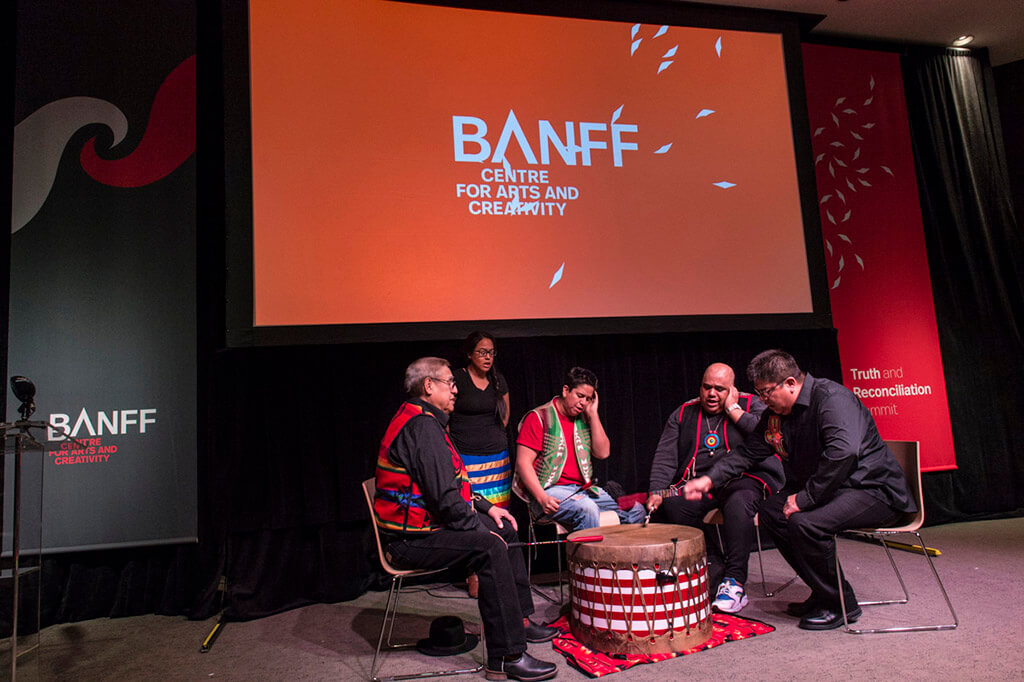
Arluk sees no better environment than at Banff Centre to engage in crucial dialogue across cultures and disciplines. She is eager to explore the dual potential that the Centre holds between their leadership mandates in the arts and Indigeneity. “What I love about Banff, and what had me apply, was that they are using the TRC as part of their strat plan. That to me says, ‘We want to engage in a better conversation with Indigenous People.’” Aside from their willingness to engage, it doesn’t hurt that Banff has other assets—notably dedicated funding, as well as an international reach. Arluk is ready to get the ball rolling year-round on Indigenous affairs, and “Banff is that centre that can absolutely help do that.”
Arluk also has faith in a continued climb currently enjoyed by Indigenous musicians. At this year’s Juno Awards, Tanya Tagaq, Buffy Sainte-Marie, and A Tribe Called Red numbered among the Indigenous winners. “You look at Tanya Tagaq, Quantum Tango, Nelson Tagoona, you just look at how our artists are using our traditional knowledge in a way that is beyond contemporary.”
The Calgary International Film Festival recently announced that their Festival Opening Gala will centre on the Indigenous music documentary When They Awake, chronicling the First Nations communities’ ascension from the ashes of their colonisation in Canada. The Indigenous-themed gala will also showcase live performances by First Nations musicians. Many of the names mentioned by Arluk figure in the film’s cast and credits. Louis Riel would have been proud to witness the realisation of his prophecy: “My people will sleep for 100 years, but when they awake, it will be the artists that give them their spirit back.”
Arluk explains that each Indigenous performance broadcast and each music award is a collective win for all Indigenous Peoples. “We have to be unified. I think we’re all understanding that now–we’re not going to succeed otherwise. I think we need to be advocates and friends of each other, so that our voices can be heard.”
To our nation’s collective understanding, Canada’s 150-year history has been one of comparative peace and tolerance next to the that of most countries. That insulated view was put into serious question in December 2015: report findings from the Truth and Reconciliation Commission of Canada (TRC) unearthed the abuse sustained by Indigenous peoples, the aftermath of which continues to be felt today.
It is now 2017, and in step with the times, Canadians now are attuned to the flagrant blemish the report casts on our country’s narrative. The past year has not been without its share of contemporary strife in Indigenous communities: events that stand out include the Cultural Appropriation Prize media firestorm last May, the Canada Day weekend protest by teepee-erecting protestors on Parliament Hill, the year-old Attawapiskat suicide crisis, and the ongoing drinking water advisories in many First Nations communities. This year’s re-mounting of the opera Louis Riel at the Canadian Opera Company, the National Arts Centre and the Grand théâtre de Québec further spotlights the voice of the Métis people, scrutinised under a new light against Sir John A. Macdonald’s campaign to wipe out First Nations communities.
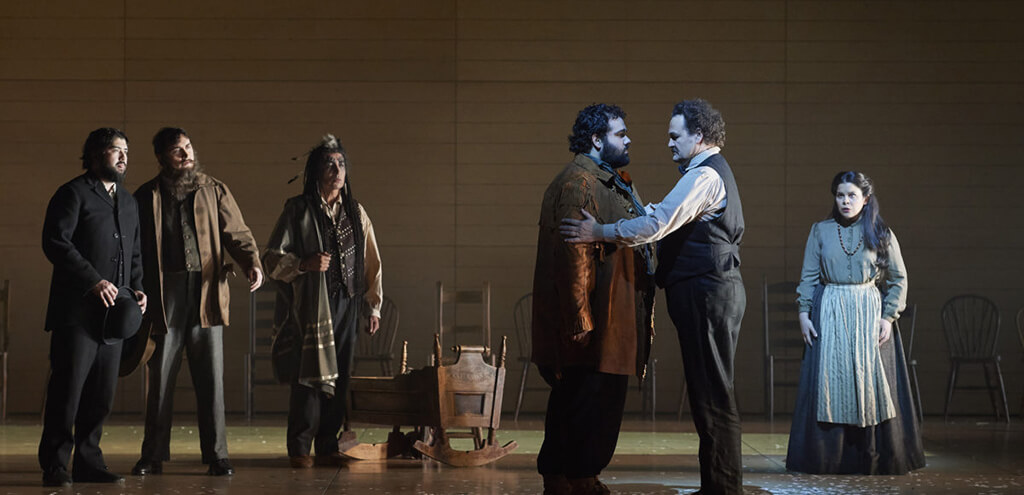
As raw as this new Canadian reality is, this has empowered more Canadians to advocate for equal rights for Indigenous peoples. The concept of neglect will be a thing of the past: beyond gender fluidity, race, religion, political beliefs, mental health, and accessibility for all citizens, the landmark next step is to actively include Indigenous peoples’ participation in these discussions earmarked for all Canadians. If we must now make a slight detour to mend relations and physical tolls, there is much optimism in the Banff air for how all peoples—First Nations and those who came after—will band together to make responsible decisions on this land.
There is work to be done elsewhere in the country. As it stands, cultural realities contrast sharply between regions: in Quebec, any talk of cultural factions tends to centre around the francophone-anglophone debate; in the Atlantic provinces, societal hierarchies are built on levels of urbanisation; in urban centres themselves like Toronto and Vancouver, the dominant cultural interactions are between immigrants from outside of the country and immigrants who arrived slightly before the newest wave (in the context of its occupation by First Nations Peoples).
Meanwhile, Western Canada seems fundamentally more entrenched in Indigeneity than out east. Along British Columbia’s coast, totem poles have long been a cherished sight for Canadians—as well as guardians of their Indigenous creators’ stories. In Banff’s home province, there is a mandatory Indigenous component to the Alberta school curriculum from kindergarten to grade 12, thus equipping students with a thorough grounding in various First Nation groups’ cultures and customs (the tradeoff being that French classes are not mandatory in the curriculum). The 2006 national census pegs the Albertan Indigenous population at 7.5%, and the Alberta School Boards Association actively monitors its Indigenous student body through a report measuring the performance of the population.
Within this context, Banff Centre responded quickly to the TRC report, organising a Truth and Reconciliation Summit on campus in October 2016, with a majority of participants hailing from the Bow Valley. In providing a forum for dialogue between Indigenous and non-Indigenous communities, the knowledge and experiences drawn from the Summit will be implemented into Banff Centre’s programming decisions on a continual basis, and finds special relevance within its 46-year-old Indigenous Leadership Program.
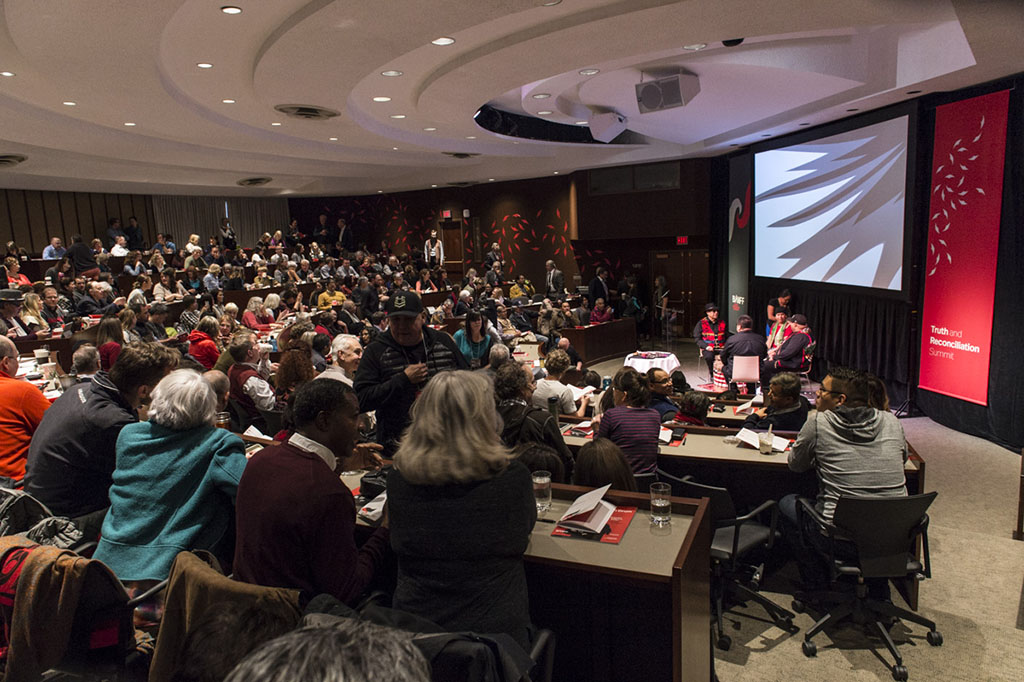
Beyond hosting the Truth and Reconciliation Summit, Banff Centre is hoping to lead by example in other ways. In their Comprehensive Institutional Plan for 2017-2020, the Centre has announced extensive development for their Indigenous Leadership programs, notably:
-expanding their Indigenous Arts program to run year-round;
-launching a minimum of two open-enrolment Indigenous Leadership programs per year;
-advising agencies at the private, non-profit, and public levels in realising recommendations put forward by the TRC;
-launching the Reconciliation and Rights Relations program in October 2017 for the non-Indigenous population, expanding to serve Indigenous and mixed groups by 2019;
-undertaking a study across the country to collect success stories from various Indigenous communities;
-continued publication of their Buffalo Mountain Drum magazine, documenting stories of Indigenous community members as well as developments in Banff Centre’s Indigenous-oriented initiatives.
Banff Centre has demonstrated their obligation to inform Canadians of their responsibilities as stewards of shared Treaty land. As such, the way forward towards forgiveness and integration is to raise the profile of First Nations, Inuit, and Métis Peoples in the minds of Canadians. For those from both sides who are willing to overcome past conflict, these trailblazers will lead Canada forward in cultural collaboration, an example for other acts to follow in cultural and artistic domains.
At the heart of the First Nations culture are the seven sacred teachings: love, respect, humility, courage, wisdom, honesty, truth. Come to think of it, don’t these values also hold true in meaningful musical collaborations at Banff Centre and beyond?
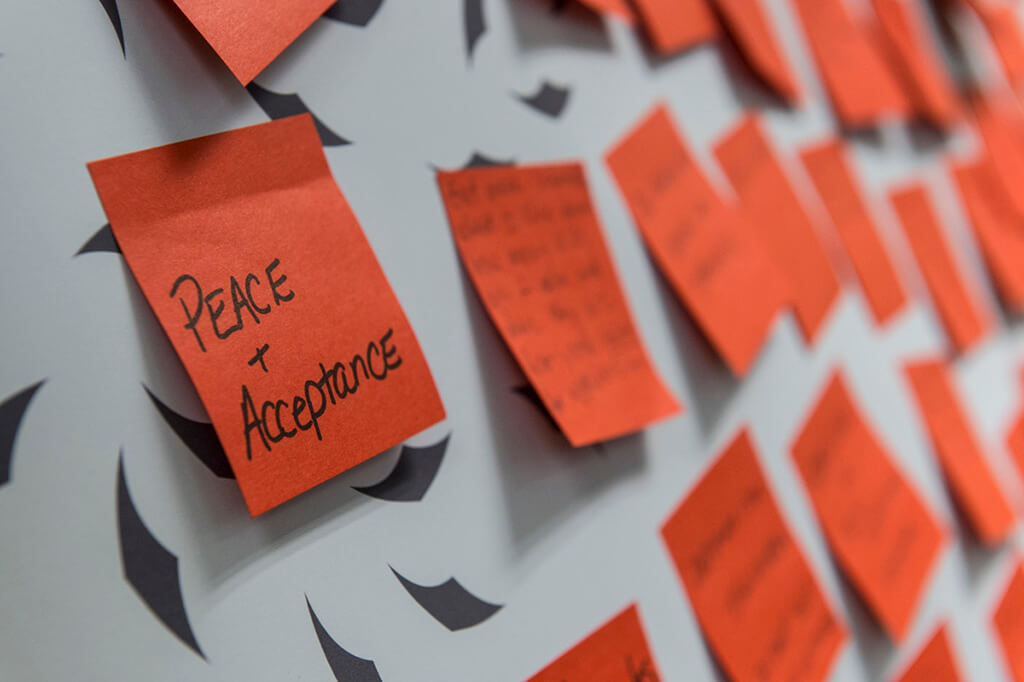
When charting a future course, there may be opposing sides to take based on ideologies. But when fundamental human rights enter the picture, as in the case of reconciliation with Canada’s Indigenous Peoples, the imperative to collaborate is clear.
For other, more subjective creative initiatives, the way forward is more ambiguous and tinged with sentiment for the past. Regardless of one’s personal opinion on the staying power of traditional art forms, we are living in a society that is increasingly driven by innovation and impactful presentation. If we chalk it down to the basic human anatomy, when a person is in stride, momentum carries their weight forward. From a place of security, we move towards new horizons. And so goes the creative cycle, perpetually forward, hopefully in good company.
As Banff Centre sits high up in the Canadian landscape, many arts communities will be looking up to Banff for reports on the cultural climate. They say the arts world is a small one, anyway.
For more CLASSICAL MUSIC NEWS, visit HERE.
- LISZTS | 10 Reasons To Miss A Performance - April 24, 2019
- INTERVIEW | Nico Muhly: Opera’s Renaissance Man - November 8, 2018
- INTERVIEW | How An Iranian Musician Has Created A Revolution In Persian Classical Music - October 7, 2018
- LISZTS | 10 Reasons To Miss A Performance - April 24, 2019
- INTERVIEW | Nico Muhly: Opera’s Renaissance Man - November 8, 2018
- INTERVIEW | How An Iranian Musician Has Created A Revolution In Persian Classical Music - October 7, 2018



